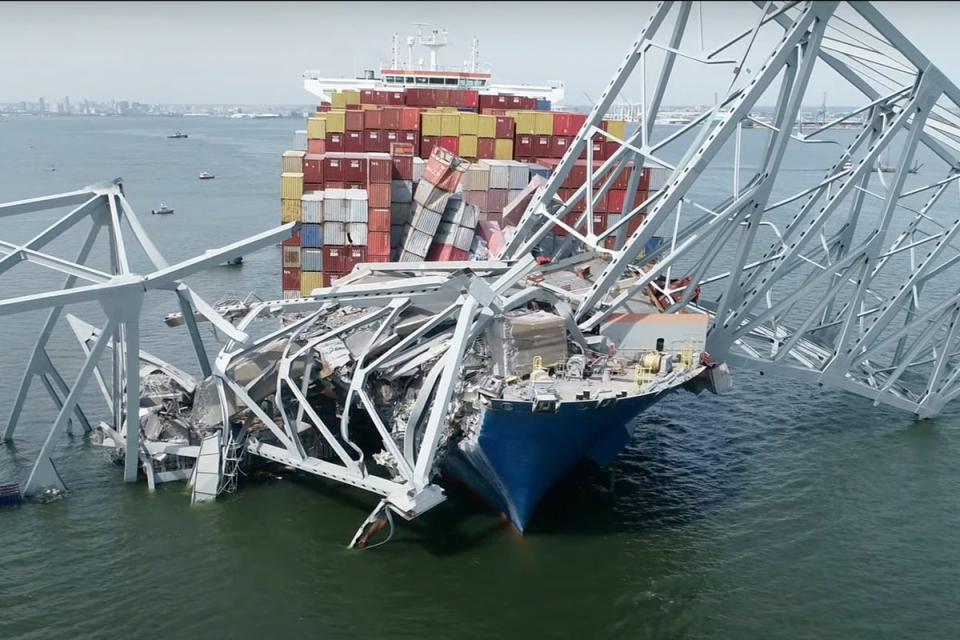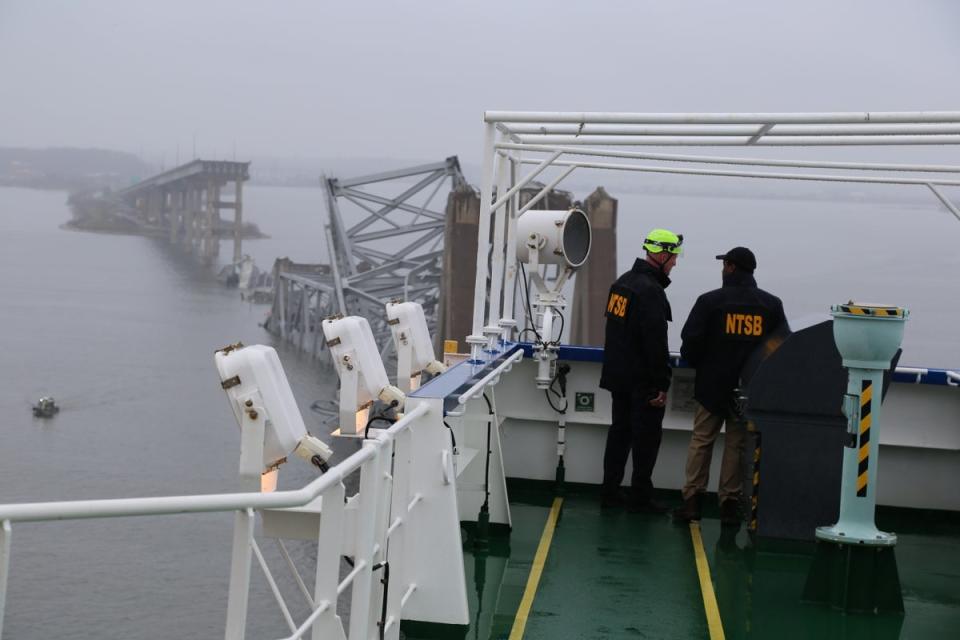Did ‘dirty fuel’ play a role in Baltimore bridge collapse?
Investigators are examining the possible role of “dirty fuel” in the cargo ship collision which destroyed Baltimore’s Francis Scott Key Bridge.
The Dali collided with the four-lane road bridge at 1.28am on Tuesday as it sailed out of the Maryland harbour.
Minutes before the collision, the propulsion system on board the vessel went down, alarms sounded, and the vessel began veering towards a support for the bridge.
At 1.26am, the captain called for crew to try to restart the engine and steer hard to the left. A minute later, he ordered them to drop anchor, and issued an emergency radio call to transport authorities on the bridge.
However the Dali, 1,000 ft long and 95,000 tons when empty, would have been virtually impossible to stop. It hit the 1.6mile bridge at 1.28am, causing its immediate collapse into the Patapsco River.

While vehicle traffic was stopped from entering the bridge, an eight-man construction crew was unable to escape in time.
Two workers were rescued from the water in the immediate aftermath. The bodies of two others, Alejandro Hernandez Fuentes, 35, and Dorlian Ronial Castillo Cabrera, 26, were recovered from the river on Wednesday. Four men remain missing.
A joint federal and state investigation into the disaster will include an examination of the fuel, according to The Wall Street Journal. “The vessel went dead, no steering power and no electronics,” one officer, who was on the ship, told the newspaper. “One of the engines coughed and then stopped. The smell of burned fuel was everywhere in the engine room and it was pitch black.”
The Independent has contacted Unified Command, which is handling the investigation, for comment.
Cargo ships, responsible for 90 per cent of global trade, run on bunker or marine fuel. It was described as a “witch’s brew” of used motor oil and industrial byproducts in a 2018 report by The Atlantic Council.
The fuel is widely used at major global ports, and has caused at least 200 ships to suffer “serious, sometimes complete engine failure”, the researchers noted, dubbing it “engine killers”. Some vessels were left adrift in the ocean, others ran aground, and some were carrying cargoes that could have caused serious human and environmental disasters.

Dr Alan J Murphy, professor in maritime engineering at University of Southampton, said that problems or contamination of fuel could have caused the Dali’s engines to cut out but that it was a complex issue.
“I would expect that the fuel for the electrical generators and the fuel for the main engines to be different fuels from different tanks – and ships of that size have their own fuel purification, separation, filtration and settling tank systems (at least for the removal of water contamination and dirt and solid particles), ” he told The Independent in an email.
“[S]o my sense would be that the cause of a total electrical and propulsion power failure might be more nuanced than a single ‘dirty fuel’ source alone.”
Tuesday’s incident wasn’t the Dali’s first collision. The ship collided with a quay while leaving the Port of Antwerp-Bruges in Belgium eight years ago, according to VesselFinder. That caused significant damage to the hull, and it was docked for repairs before returning to duty.
The Dali was also cited by port officials in Chile last June for a deficiency in the category of “propulsion and auxiliary machinery”, with “thermometers, gauges, etc” listed, according to the Electronic Quality Shipping Information System (Equasis). In September 2023, the cargo ship was reinspected by the US Coast Guard in New York, and no problems were listed.
On its most recent voyage, the Dali was chartered by shipping giant Maersk and operated by Synergy Marine Group.
“We are horrified by what has happened in Baltimore, and our thoughts are with all of those affected,” Maersk said in a statement.
Definitive answers remain some way off. Maryland Governor Wes Moore said on Thursday that industry and government experts were just starting to figure out how to remove the debris and cargo ship from the channel.
Barges carrying cranes to begin that process were heading for Baltimore on Thursday.
“This work is not going to take hours. This work is not going to take days. This work is not going to take weeks,” Moore said. “We have a very long road ahead of us.”
With additional reporting from Sheila Flynn


